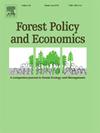了解城市社区如何在森林管理和生态系统服务目标之间进行权衡
IF 3.8
2区 农林科学
Q1 ECONOMICS
引用次数: 0
摘要
靠近森林地区的城市人口重视与水有关的生态系统服务和娱乐机会。然而,要保持这些利益,就需要通过疏林和规定焚烧、基础设施发展以及公平问题来积极管理森林。这些活动还可能导致公众对准入费、烟雾排放以及对森林健康的负面影响感到担忧。本研究旨在了解在野地-城市交界的山地森林中,公众偏好与森林管理目标之间的权衡。我们采用了一项在线调查,使用最佳最差尺度(BWS)方法来评估森林管理和生态系统服务属性之间的重要性排名和权衡。这项研究的重点是美国南加州圣贝纳迪诺和安吉利斯国家森林附近的城市社区。结果表明,常访组和不常访组居民的偏好不一致。居民优先考虑机械砍伐树木,而不是规定的火灾,这是最重要的森林管理目标。湖泊超越河流和瀑布,成为最有价值的生态系统服务属性。在娱乐设施中,公共厕所的排名最高,其次是垃圾箱和公共烧烤架。这些发现通过提供平衡生态需求与公众偏好的框架,为森林管理者和政策制定者提供了见解。通过确定潜在冲突和加强公众对森林管理决策的支持,研究结果对实施野火危机战略和森林管理计划等政策尤为重要。本文章由计算机程序翻译,如有差异,请以英文原文为准。
Understanding how urban communities make trade-offs between forest management and ecosystem service objectives
Urban populations adjacent to forested areas value water-related ecosystem services and recreational opportunities. However, maintaining these benefits requires active forest management through thinning and prescribed burns, infrastructure development as well as issues of equity. These activities can also lead to public concerns over access fees, smoke emissions, and perceived negative impacts on forest health. This study aims to understand the tradeoffs between public preferences and forest management objectives in Wildland-Urban Interface montane forests. We employed an online survey using the Best-Worst Scaling (BWS) method to assess importance rankings and tradeoffs among forest management and ecosystem services attributes. The study focused on urban communities near the San Bernardino and Angeles National Forests in southern California, USA. Results reveal that residents' preferences between frequent visitors group and infrequent visitors group were inconsistent. Residents prioritized mechanical tree removal over prescribed fire as the most important forest management objective. Lakes emerged as the most valued ecosystem service attribute, surpassing rivers and waterfalls. Among recreational infrastructure, public restrooms ranked highest, followed by garbage bins and public grills. These findings provide insights for forest managers and policymakers by offering a framework that balances ecological needs with public preferences. The results are particularly relevant for implementing policies such as the Wildfire Crisis Strategy and forest management plans, by identifying potential conflicts and enhancing public support for forest management decisions.
求助全文
通过发布文献求助,成功后即可免费获取论文全文。
去求助
来源期刊

Forest Policy and Economics
农林科学-林学
CiteScore
9.00
自引率
7.50%
发文量
148
审稿时长
21.9 weeks
期刊介绍:
Forest Policy and Economics is a leading scientific journal that publishes peer-reviewed policy and economics research relating to forests, forested landscapes, forest-related industries, and other forest-relevant land uses. It also welcomes contributions from other social sciences and humanities perspectives that make clear theoretical, conceptual and methodological contributions to the existing state-of-the-art literature on forests and related land use systems. These disciplines include, but are not limited to, sociology, anthropology, human geography, history, jurisprudence, planning, development studies, and psychology research on forests. Forest Policy and Economics is global in scope and publishes multiple article types of high scientific standard. Acceptance for publication is subject to a double-blind peer-review process.
 求助内容:
求助内容: 应助结果提醒方式:
应助结果提醒方式:


